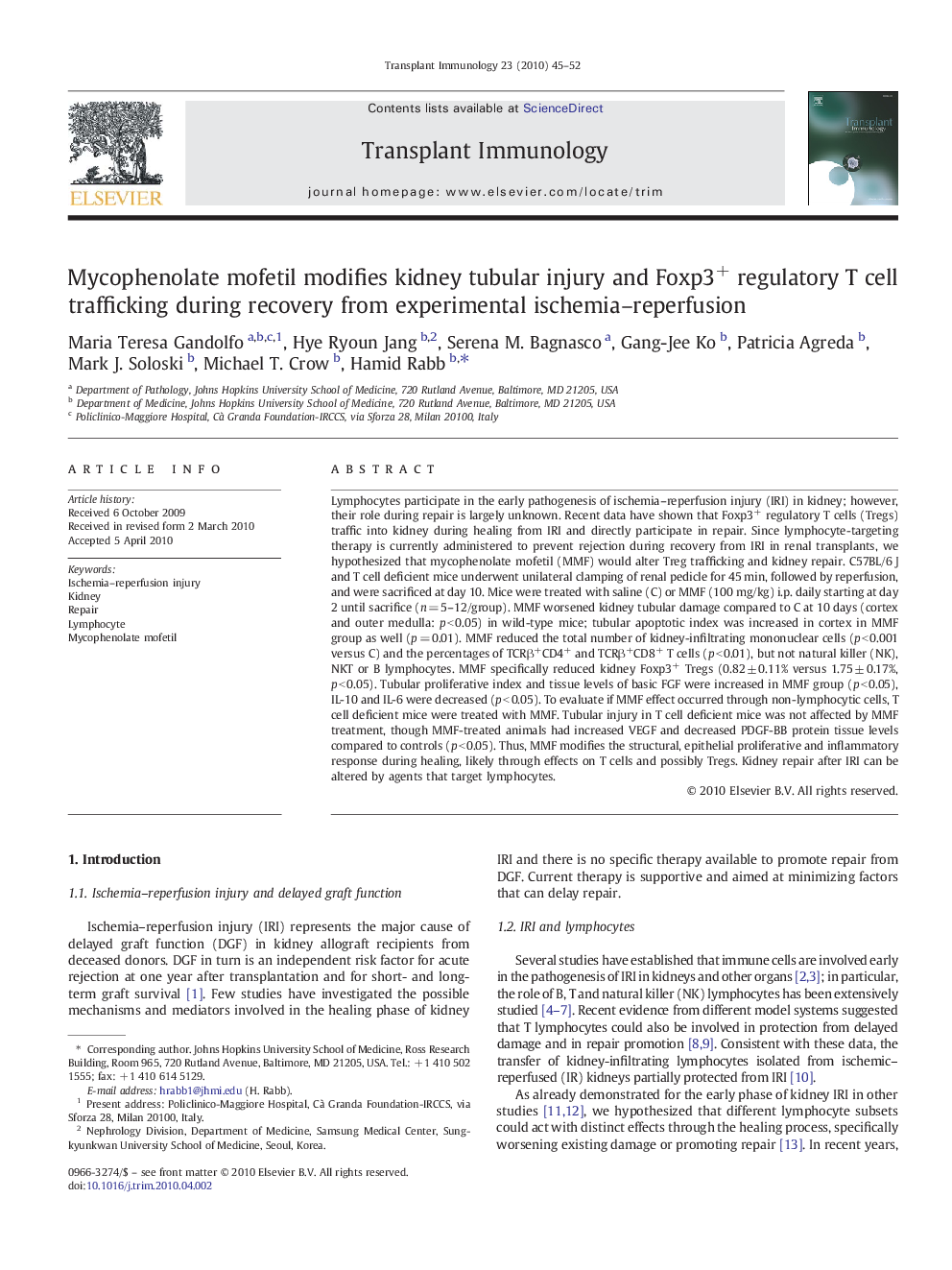| Article ID | Journal | Published Year | Pages | File Type |
|---|---|---|---|---|
| 3392245 | Transplant Immunology | 2010 | 8 Pages |
Lymphocytes participate in the early pathogenesis of ischemia–reperfusion injury (IRI) in kidney; however, their role during repair is largely unknown. Recent data have shown that Foxp3+ regulatory T cells (Tregs) traffic into kidney during healing from IRI and directly participate in repair. Since lymphocyte-targeting therapy is currently administered to prevent rejection during recovery from IRI in renal transplants, we hypothesized that mycophenolate mofetil (MMF) would alter Treg trafficking and kidney repair. C57BL/6 J and T cell deficient mice underwent unilateral clamping of renal pedicle for 45 min, followed by reperfusion, and were sacrificed at day 10. Mice were treated with saline (C) or MMF (100 mg/kg) i.p. daily starting at day 2 until sacrifice (n = 5–12/group). MMF worsened kidney tubular damage compared to C at 10 days (cortex and outer medulla: p < 0.05) in wild-type mice; tubular apoptotic index was increased in cortex in MMF group as well (p = 0.01). MMF reduced the total number of kidney-infiltrating mononuclear cells (p < 0.001 versus C) and the percentages of TCRβ+CD4+ and TCRβ+CD8+ T cells (p < 0.01), but not natural killer (NK), NKT or B lymphocytes. MMF specifically reduced kidney Foxp3+ Tregs (0.82 ± 0.11% versus 1.75 ± 0.17%, p < 0.05). Tubular proliferative index and tissue levels of basic FGF were increased in MMF group (p < 0.05), IL-10 and IL-6 were decreased (p < 0.05). To evaluate if MMF effect occurred through non-lymphocytic cells, T cell deficient mice were treated with MMF. Tubular injury in T cell deficient mice was not affected by MMF treatment, though MMF-treated animals had increased VEGF and decreased PDGF-BB protein tissue levels compared to controls (p < 0.05). Thus, MMF modifies the structural, epithelial proliferative and inflammatory response during healing, likely through effects on T cells and possibly Tregs. Kidney repair after IRI can be altered by agents that target lymphocytes.
